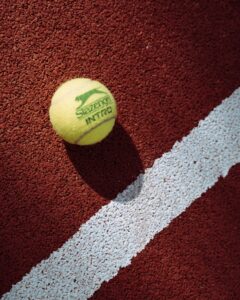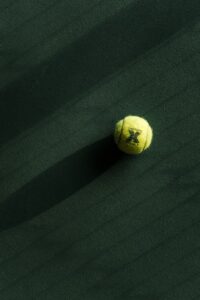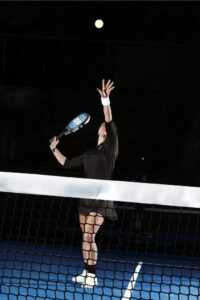Understanding the Rebound: A Closer Look at Padel Tennis Balls
3 min read
Understanding the Rebound: A Closer Look at Padel Tennis Balls
As a passionate padel player, one thing that always fascinates me is the rebound of the padel tennis ball. This small, fuzzy sphere can make all the difference in your game, and understanding its characteristics can help you ace your shots and surprise your opponents. So, let’s dive into the world of padel tennis balls and explore what makes them bounce!
The Inner Core: The Secret to the Bounce
Padel tennis balls are more than just their soft exterior. What lies beneath that fuzzy green or yellow fabric is the truly magical component of these balls. The inner core is made from a mixture of rubber and pressurized air, giving it the elasticity and resilience needed for those perfect rebounds.
When you hit the ball with your racket, the pressure inside the core quickly compresses, storing the energy from your shot. Once the ball makes contact with the court surface, that stored energy is unleashed, resulting in a lively rebound. This is why it’s crucial to choose a high-quality ball, as a well-made padel tennis ball will have consistent bounce and control.
Pressurized or Non-Pressurized: Which is Better?
When shopping for padel tennis balls, you’ll often come across the terms “pressurized” and “non-pressurized.” But what’s the difference, and which option suits your game?
Pressurized balls, indicated by a “P” on the canister, offer a livelier bounce and are perfect for competitive play. The pressurized air inside the core provides greater energy transfer, resulting in a faster and more powerful rebound. These balls are ideal for more advanced players looking for an extra edge in their game.
On the other hand, non-pressurized balls, marked with an “NP,” are better suited for recreational play or beginners. These balls have a softer bounce and are easier to control, making them perfect for learning the ropes of padel tennis. They are also a great choice for players who prefer a slower game pace.
The Fuzzy Outer Layer: What’s its Role?
Have you ever wondered why padel tennis balls have that fuzzy outer layer? Well, it’s not just for aesthetics—it plays a crucial role in determining the ball’s bounce and speed.
The fuzzy felt exterior creates friction between the ball and the court surface. This friction slows down the ball’s speed upon impact, ultimately affecting the rebound. The amount of fuzz on the ball also affects its durability and grip, so be sure to inspect your balls regularly to ensure they are in top shape.
Other Factors Affecting the Rebound
While the padel tennis ball is the star of the show when it comes to rebound, there are a few other factors you should consider to optimize your game.
Firstly, the court surface plays a significant role in the ball’s bounce. Different types of courts, such as artificial grass or clay, can affect how the ball behaves. So, make sure to adapt your shots accordingly.
Additionally, the weather conditions can also impact the rebound of the ball. On hot days, the rubber core may become slightly softer, resulting in a higher bounce. Conversely, cool temperatures may cause the ball to lose some of its bounce, requiring you to adjust your game accordingly.
In Conclusion
The rebound is an essential aspect of padel tennis, and understanding the nuances of padel tennis balls can give you a competitive advantage. Whether you opt for pressurized or non-pressurized balls, remember to consider the court surface and weather conditions to make the most of your game.
So, next time you step onto the padel court, pay close attention to the rebound of the ball. Use this knowledge to your advantage, surprise your opponents, and elevate your padel skills. Remember, mastering the rebound is the key to becoming a padel tennis pro!






